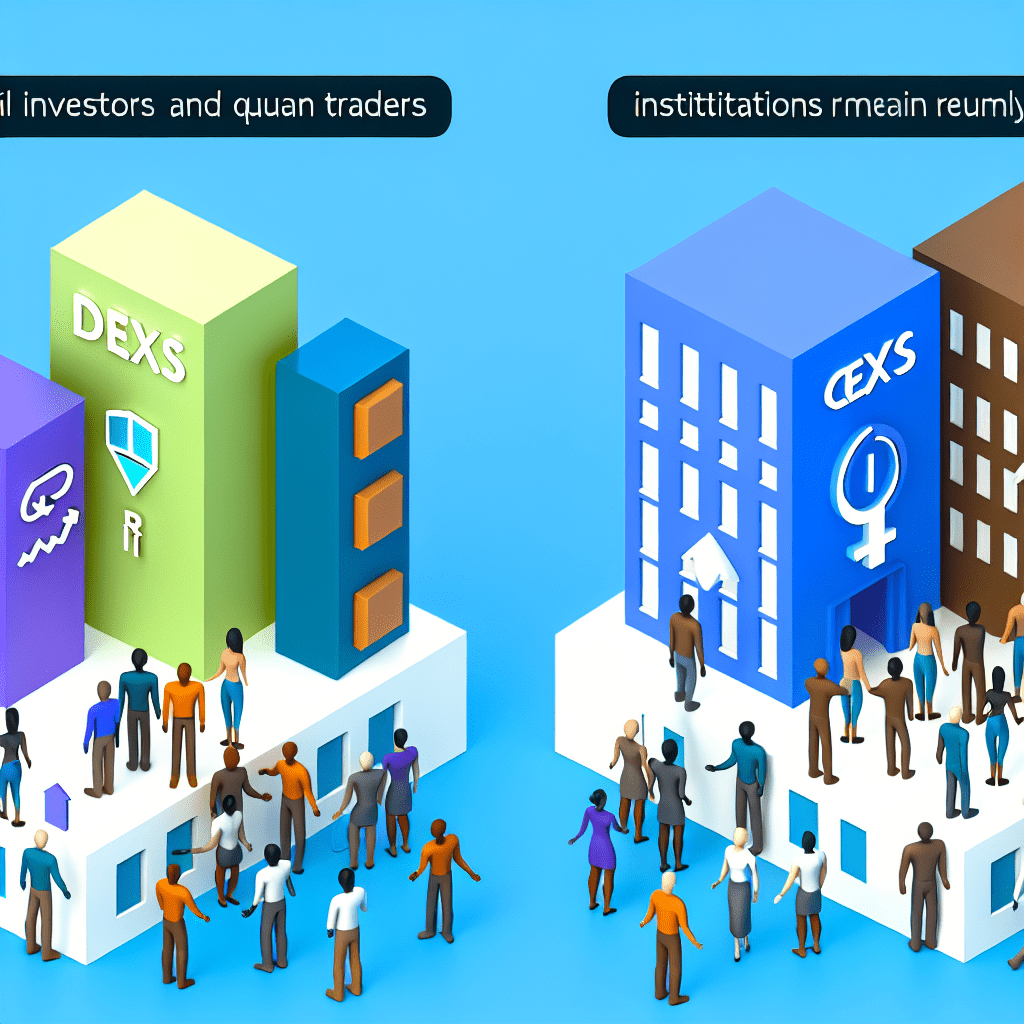Decentralized exchanges (DEXs) are swiftly becoming popular among retail traders and quants, while institutions still prefer centralized platforms, according to Jamie Elkaleh, Bitget Wallet’s chief marketing officer.
Elkaleh informed Cointelegraph that the primary adoption of platforms like Hyperliquid is “driven by retail traders and semi-professional quants.” Retail users are attracted by airdrop cultures and rewards systems, while quants appreciate “lower fees, quick fills, and programmable strategies,” he noted.
Nonetheless, institutional desks continue to depend on centralized exchanges (CEXs) due to their support for fiat processes, compliance services, and prime brokerage capabilities.
Elkaleh remarked that the execution quality gap between DEXs and CEXs is narrowing rapidly. “Order-book based DEXs like Hyperliquid, dYdX v4, or GMX are now offering latency and depth previously exclusive to CEXs,” he explained.
Related: Bitwise applies for spot Hyperliquid ETF amid perpetual DEX competition
DEXs aim to provide CEX-speed trading with onchain transparency
Hyperliquid, a leading perpetual DEX platform, operates on its own chain and offers an onchain central limit order book. “Every order, cancellation, and fill is fully auditable,” declared Elkaleh. “It’s performance without sacrificing decentralization.”
The platform achieves sub-second finality without charging gas fees per trade, striving to merge CEX-like speed with self-custody. However, competition is intensifying. On BNB Chain, Aster has emerged as a prominent competitor.
“Aster’s incentive campaigns have recently propelled its daily perp volume to unprecedented levels, even surpassing Hyperliquid on certain days,” Elkaleh stated. In the past day, Aster recorded approximately $47 billion in perp volume, over double Hyperliquid’s $17 billion volume, according to DefiLlama’s data.
The rise of BNB- and Solana-based DEXs is noteworthy. BNB perp protocols recently achieved $60–70 billion in daily turnover, while Drift and Jupiter Perps have consistently gained popularity. These ecosystems, Elkaleh stated, benefit from quick settlement, seamless onboarding, and incentives.
However, DEXs encounter well-known risks. Elkaleh highlighted concerns related to validator or sequencer centralization, faulty oracles, exploitable upgrade keys, and bridge vulnerabilities. He also emphasized the challenges of ensuring reliable liquidation engines during volatile periods.
On Friday, Aster compensated traders impacted by a glitch in its Plasma (XPL) perpetual market, which temporarily drove prices to nearly $4 due to a hard-coded index error. The price surge resulted in unforeseen liquidations and fees.
Related: Aster can surpass HYPE by market cap and rise another 480%: Analyst
DEXs and CEXs to coexist
Looking forward, Elkaleh expressed that he doesn’t anticipate a zero-sum scenario. “DEXs are undeniably the future of crypto-native trading infrastructures,” he mentioned. “Simultaneously, CEXs remain crucial for fiat liquidity and onboarding.”
“In the coming decade, we may witness hybrid models that integrate the strengths of both, fostering a balanced ecosystem where coexistence, not replacement, propels the next phase of crypto markets,” he concluded.
Magazine: 7 reasons why Bitcoin mining is a terrible business idea

